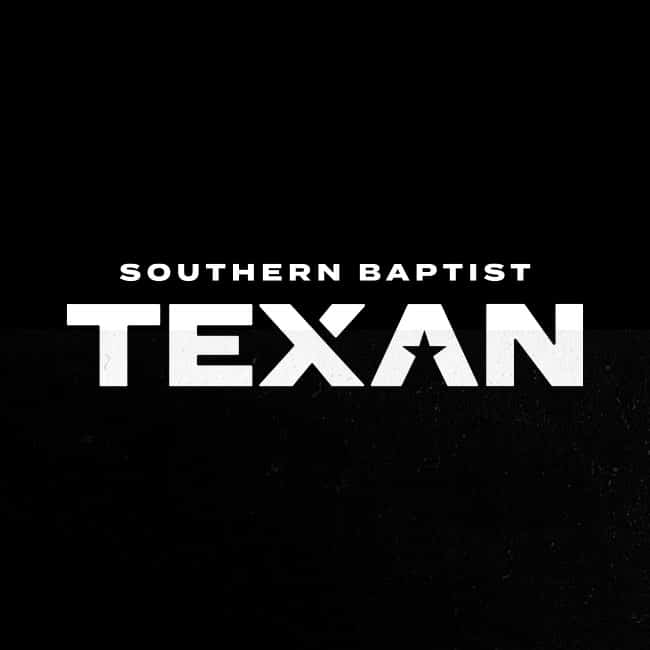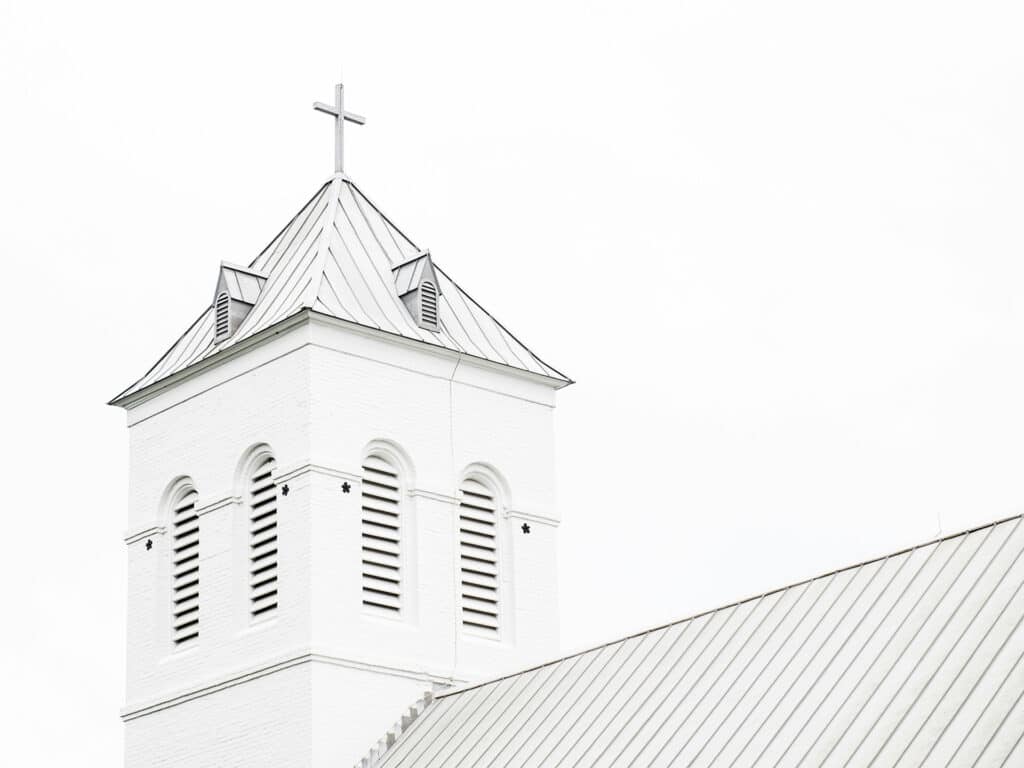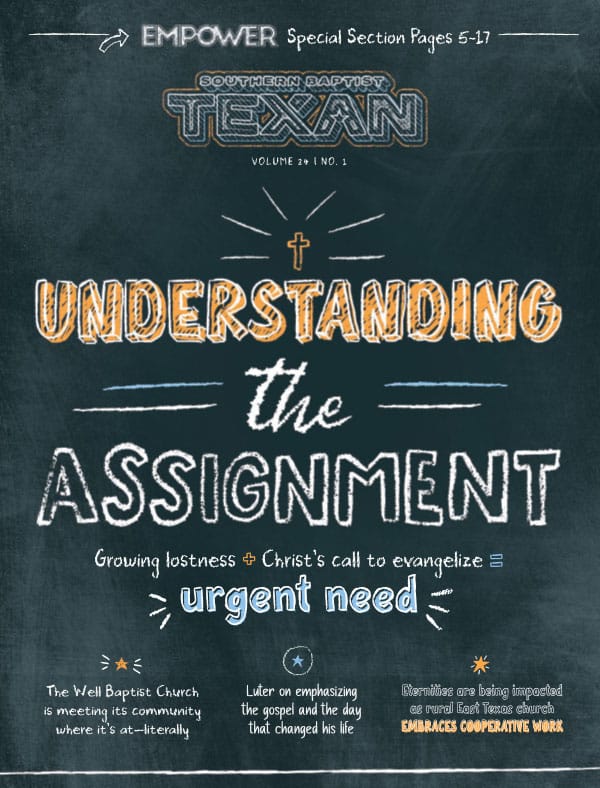Messengers to the Southern Baptists of Texas Convention Annual Meeting will gather for a powerful time of prayer, worship, and fellowship at Sagemont Church in Houston on Nov. 11-12.
Giving that grows
Hays Hills goes above and beyond to see the gospel delivered around the world

Hays Hills Baptist Church strives to “bring life-changing hope to an ever-changing people through the unchanging gospel.”
To make that mission statement a reality, the church is setting an example of what it looks like to engage in ever-increasing generosity.
When Aaron Kahler transitioned from a staff position to serving as lead pastor in 2017, he felt led to challenge Hays Hills to give 20% of its annual budget through the Cooperative Program by 2030.
That effort, which the church refers to as “Neighbors & The Nations,” describes the commitment the congregation has made to support those working to bring the gospel to unreached and unengaged people locally and around the world.
The plan was for the church to increase giving by 1% annually until it reached its 20% goal. But that’s not what happened.
“In God’s grace, He did far more abundantly than we could have imagined and we went all the way over to 21% given in year one,” Kahler said. “The church just bought in wholeheartedly to giving to the cause ….”
Kahler said Hays Hills recognizes the potential to multiply its impact through CP giving, “not only in our church being effective today, but for our church and other Southern Baptist Convention churches to be effective 100 years from now.” Giving through the Lottie Moon Christmas Offering, which Kahler said has increased substantially, is one of the main ways Hays Hills seeks to have a global, cooperative impact.
On a more local level, Kahler said the impact is evident in the support provided to missionaries from Hays Hills who have served with the International Mission Board, in guidance provided to church leaders on multiple occasions by the Ethics and Religious Liberty Commission, and even in how he has been personally equipped to preach by Southwestern Baptist Theological Seminary. All are entities supported by CP giving.
Though the gospel work never seems to be accomplished as fast as he’d like, Kahler said he is more encouraged now than he has been in his 13 years serving at the church because of God’s faithfulness. Planted in one of the fastest-growing suburbs of Austin, the church has seen Buda’s population more than double to over 15,000 residents over the past decade. Hays Hills has advocacy groups for each of its missionary partners, which has strengthened the missions culture within the church in an effort to reach the growing population.
Additionally, Hays Hills is beginning to see more evangelistic fruit through its college and career ministry and through its young couples ministry.
“All of those areas of ministry that the Lord is blessing are areas I do not touch at all,” he said. “It is ministry our people are engaged in because of their love for Jesus, His church, and the lost.”
The greatest kind of legacy
Family passes on legacy of faith to reach multiple communities in need
Many years ago, the gospel changed the Gameros family. It started with Javier Gameros, who grew up in a Mexican Catholic family that, as he says, taught him the rites and practices of religion without helping him understand that God wanted a personal relationship with him. Over time, God used a series of people and circumstances to help Javier come to know that truth. He heard the plan of salvation for the first time at age 8 from a Baptist pastor hosting a Bible club in his neighborhood. At age 19, Javier accepted Christ after hearing the gospel again from his sister, Susana.
Javier later met and married Margarita, and soon they answered a call to vocational ministry. While Javier and Margarita committed to serve the Lord with all their hearts, they knew their greatest influence would happen at home among their five children.
“Ministry was something I saw and learned every day,” said Vidreael Gameros, one of the family’s three sons. “My parents taught us how to love and serve the Lord through a life of obedience and sacrifice. … The same leader I saw [from my father] in the pulpit was the same leader I saw in the home, and that impacted my life in a big way.”
Javier eventually was called to pastor a church in Manvel known today as Un Nuevo Comienzo Venciendo Con Dios, which means, “A new beginning, overcoming with God.” It’s a fitting name, Javier says, noting a severe economic and moral decline has caused what he calls “spiritual poverty” in parts of the city.
Even as he served his own community, Javier was burdened by other nearby communities suffering in similar ways—one of which was Holiday Lakes, a predominantly Hispanic community located about 30 miles south of Manvel. At the time, Holiday Lakes had no Hispanic Southern Baptist church.
“I saw the urgent need to not stop, but to expand the gospel and see more souls saved since society, the family, and the church are being attacked and their precepts are being erased,” Javier said.
But who would be willing to plant a church in Holiday Lakes? He looked no further than his son, Vidreael, who had sensed a calling to ministry since childhood. Vidraeal began a church planting residency training program through Champion Forest Baptist Church in Houston and also received training through Send Network SBTC, the Southern Baptists of Texas Convention’s church planting partnership with the North American Mission Board.
After working with his father, Vidraeal was sent to plant Iglesia Bautista Holiday Lakes about three years ago. The church officially launched about a year ago and is seeing fruit despite many challenges, including natural disasters, a large drug trade, and the presence of witchcraft.
The work is challenging, but Vidreael said he feels like he is never alone because of his family and the connections and equipping offered through the SBTC.
“It is a blessing to have access to a family that is running the same race,” he said. “[The SBTC] has helped us find connections we need to facilitate challenges in ministry, and it has connected us to other brothers and sisters who love the work of the Lord. … We are celebrating the transformation God is doing in the families in Holiday Lakes.”
In other words, the same gospel that once changed the Gameros family is now changing families across the region.
One mission, many hands
Churches from near and far are pitching in to assist Celina plant at the center of a population boom

As Robert Welch looks around the middle school where Legacy Hills Church meets each Sunday, he sees the faces of people who otherwise might not be there if it weren’t for the churches across Texas that have worked alongside his.
Over the past year, Legacy Hills members have deeply invested in the community, hosting kids camps, community events, and outreaches to build relationships in one of the fastest-growing regions in the state. But when you’ve planted a church in a city that has more than tripled in population over the past five years, you can never have too much help.
To date, 17 Southern Baptists of Texas Convention churches and two associations have in some way helped Legacy Hills solidify its gospel footing in the city. Some of those churches have sent volunteers to Celina, sending missions teams and financial support. Others have taken up offerings at their own vacation Bible schools and sent the proceeds to Legacy Hills so it could host its own outreaches to kids. Still others have committed to pray weekly, asking God to bless the gospel work happening there.
The results have been tangible.
“The majority of families that are now deeply involved with Legacy Hills have come through community events, camps, and outreaches that our partners have helped with,” Welch said. “Our partners were the first to share the gospel with their children. Many of our families are literally the result of the opportunities that our partners helped us create.”
New Beginnings Baptist Church in Longview is Legacy Hills’ sending church. George Willis, NBBC’s pastor of missions, said the relationship has been mutually beneficial to the kingdom.
“We believe in equipping and empowering members of our congregation,” Willis said. “We want them to understand their kingdom platform, their giftings. So when we partner with other church planters, they get the opportunity to see what it looks like to be part of kingdom growth all over. If we just stayed here in East Texas, it would be a disservice to the church to not be utilizing our people to be sent out and serve all over the world.”
Added Todd Kaunitz, New Beginnings’ lead pastor/elder: “We believe the church is the number one vehicle God is using to take the gospel to the world … so everything we do with our missions ministry is aimed toward either partnering to strengthen [existing] churches or to plant churches—whether that’s in East Texas, East Africa, or in Celina. … This is about the kingdom of God, so whatever we can do to expand the kingdom, we want to be all in.”
That mindset, Welch said, reaffirms what he believes the SBTC is all about.
“It’s not just about one church or one kind of church,” Welch said. “The mission that God has called us to cannot be done by one church. The mission Jesus has called His church to is accomplished by churches of every shape and size working side by side to accomplish one singular mission.”
Fostering strong partners
Churches forge special relationship that benefits residents in two areas

When an established church partners with a plant, conventional wisdom says the younger church reaps most of the benefits. Old River Baptist Church in Dayton and Cross Community Church in Houston are working together to show that the benefits can flow both directions.
The relationship between the two churches originated in the friendship between their pastors. Old River’s Wes Hinote said he and Cross Community planter Del Traffanstedt have known each other for years—“through pastor circles”—dating back to when Traffanstedt served an Odessa congregation.
“We knew each other through Southern Baptists of Texas Convention pastor retreats, and today, our two congregations are within an hour of each other,” Traffanstedt noted.
When Hinote came to Old River seven years ago, he found a loving congregation primed to adopt a missional focus. He recognized an opportunity when he learned of Cross Community.
“When Del planted Cross Community in an underserved area of Houston, I was able to speak with my congregation about the needs,” Hinote recalled.
Old River began financially supporting Cross Community. When the urban church’s vibrant English as a Second Language program encountered problems through the loss of its curriculum provider, Old River stepped in to assist.
“They were caught off guard,” Hinote said. “I got wind that they were having problems and told Del, ‘Hey, this is what we are here for. What do we need to do to make sure ESL doesn’t take a step back?’”
Cross Community’s ESL outreach (pictured below) is a vital part of its ministry. The program was started only six months after the church launched. The ESL ministry attracted more students than anticipated to its multi-semester Wednesday evening program which incorporates Bible stories and prayer. Now more than 70 participate. Nearly half attend the church and several have joined.
But the loss of their curriculum provider threatened to disrupt all that. Students pay a nominal fee for the course, affirming dignity but not covering the $180 per person cost.
“We count on our church partners to subsidize that cost. Our students cannot afford the whole amount. Our church plant in an urban area cannot afford it. We need churches like Old River to come alongside us,” Traffanstedt said. “Wes and his church pray for us and help fund ESL.”
Recently, Cross Community began playing an important role in its sister church’s new family ministry.
It began when a church family, who had both fostered and adopted children, came to Hinote about starting FAM, or Family Advocacy Ministry, at ORBC. Hinote immediately thought of Traffanstedt, who also had fostered and adopted children.
“We have fostered 10 children and adopted three,” Traffanstedt said, adding that he had started family ministries at two previous churches in addition to Cross Community.
“We were able to coach the family and Old River’s lead volunteers,” Traffanstedt said. “We prayed for them and recommended resources from the North American Mission Board.”
“The first call I made was to Del and [wife] Charmaine to pick their brains,” Hinote recalled when the family in his church approached him. “Cross Community was a big help. It’s all part of the blessing of being part of a mission that is not your own. Our SBTC churches have a lot to offer one another. Size doesn’t matter. Location doesn’t matter. Mission matters.”
Giving their best in the worst of times
Spring Baptist Church has become a ‘go-to’ when it comes to helping others following disasters
When Hurricane Beryl slammed into Southeast Texas in early July, Spring Baptist Church was already prepared to work side by side with Southern Baptists of Texas Convention Disaster Relief and its partners to serve survivors.
This wasn’t the church’s first hurricane.
“Hurricane Harvey [in 2017] was terrible, but Beryl was in some ways worse, with extensive tree damage,” said Spring Baptist Church Pastor Mark Estep. “Because of Harvey, we were ready to help.”
In Harvey’s immediate aftermath, the church converted an unused building into a laundry facility through a chain of events that saw God’s provision of skilled workers and materials. An electrician and plumber “happened by” to offer their services free of charge, and then seven washers and dryers were donated.
“God provided a laundromat within a few hours,” Estep said. Soon after, the church added four RV slips with electricity and sewer hookups to serve DR trailers, bunkhouses, and mobile command posts.
Church members were trained, as well. Spring Baptist has 50 credentialed SBTC DR volunteers among its members. Just about all of them pitched in during Beryl.
Like many SBTC churches, Spring Baptist is a “go-to” church when disaster strikes nearby, SBTC DR Director Scottie Stice said.
“During Beryl, they housed teams, provided a kitchen, made their laundry facility available,” Stice said, adding that Spring Baptist maintains a quick-response unit mobile kitchen and a recovery unit which are “very active.” Southern Baptist DR teams are housed in the church’s renovated youth building, to which showers and bathrooms were added after Harvey.
“It’s not like home, but we want to make volunteers comfortable,” Estep said. The church even erected a new pole barn to store SBTC DR trailers and equipment plus a church bus.
During the six weeks after Beryl, Spring Baptist received over 380 requests for help with downed trees, said Jason Mayfield, the church’s associate pastor. “SBTC DR responded with SBDR cleanup and recovery teams from Texas, Georgia, Florida, and Tennessee.” Teams completed 121 jobs, with the remaining requests handled by others. Five salvations occurred among survivors and many gospel conversations ensued.
“SBTC DR is not only a blessing to our whole church, but to our whole community,” Mayfield said.
“I don’t know what we would do without the SBDR teams coming here. They minister in such a powerful way. They are the hands and feet of Jesus,” Estep said. “It’s not just talk with them.”
Estep explained that he, too, has been a beneficiary of DR ministry.
As Beryl’s winds raged, Estep and his young grandson sat in a recliner, watching a tree in the yard whipping back and forth until a huge branch broke off and burst through a large plate glass living room window.
“It sounded like a shotgun,” Estep said. DR crews helped secure the window, temporarily sealing the void where the glass had been.
That assistance “meant the world to us,” Estep said. “When you are victimized during a disaster, you realize how important DR is.”
Several hurricanes and serious storms have pummeled the Spring area since Estep arrived as pastor in 1997. Working with SBTC DR, Estep’s staff and congregation embrace the opportunity to minister to survivors.
“God knows we are a church that is going to help,” Estep said. “It’s in our DNA.”














